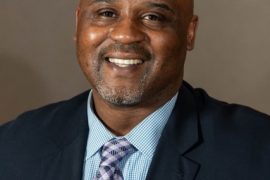Reparations, that upsetting-to-many relative of affirmative action, has burst onto America’s front pages again, this time with a dateline right here in the Chicago area.
The City of Evanston on March 22 authorized the payment of some $400,000 in grants of up to $25,000 each to Black homebuyers and rehabbing homeowners. It is the historic first installment of a larger $10 million Local Reparations Fund set up in 2019 to redress the north shore suburb’s history of racial steering and redlining seemingly aimed at segregating Blacks into a confined section of town.
But right away several Black leaders cautioned everyone to hold their applause. They pointed out that eligibility is restricted to those with an ancestor who lived in the suburb between 1919 and 1969, that the grants may be used only for tightly defined housing transactions, and even that applicants first pass credit checks. Funding for this program is to come from annual cannabis taxes.
“What we have here,” said Ald. Cicely Fleming, the only City Council member to vote against the disbursement, “is a housing program with the title reparations.” Others caution that the disbursements for housing repair and mortgage assistance primarily benefit banks and financial institutions, who they consider entities directly responsible for redlining and other discriminatory practices the program seeks to address, according to the Washington Post.
Be that as it may, this first disbursement of real money under the name “Reparations” calls for an in-depth discussion of what these programs ought to entail, why they are necessary and, most importantly, how they can be applied coast-to-coast – not just in municipalities with a guilty conscience about past discrimination.
A Nation’s Original Sin
No one is better at directing this discussion than Ta-Nehisi Coates. He’s my go-to young writer/journalist/thinker and author of a must-read explanation The Case for Reparations in the June 14 issue of the Atlantic magazine. It’s a case of paying Black people “something” in return for 250 years of slavery, 90 years of Jim Crow, and 60 years of separate-but-equal.
Historic precedents abound. Coates cites the 1783 case of the freewoman Belinda Royall, who was kidnapped as a child and sold into slavery. She spent 50 years as a slave before her master fled Massachusetts, allowing her to beseech the Massachusetts legislature for financial assistance.
Belinda was granted a pension of 15 pounds and 12 shillings, to be paid out of the estate of slaveowner Isaac Royall. It was one of the earliest successful attempts at petition for monetary redress. On a wider scale, Quakers in 18th Century New York and New England demanded that “membership be contingent upon compensating one’s former slaves.”
So, it was not out of nowhere that in 1987 an umbrella organization emerged called the National Coalition Of Blacks for Reparation in America (N’COBRA). Many questions need thoughtful answers…though likely won’t get them without determined advocacy.
“Broach the topic of reparations today,” Coates observes, “and a barrage of questions inevitably follow: Who will be paid? How much will they be paid? Who will pay?” “Perhaps after a serious discussion and debate,” Coates writes, “we may find that the country can never fully repay African Americans. But we stand to discover much about ourselves in such a discussion — and that is perhaps what scares us. The idea of reparations is frightening not simply because we might lack the ability to pay. The idea of reparations threatens something much deeper — America’s heritage, history, and standing in the world.”
The early American economy was built on slave labor, Coates explains after laying out the data. “The Capitol and the White House were built by slaves. President James K. Polk traded slaves from the Oval Office. The laments about ‘Black pathology,’ the criticism of Black family structures by pundits and intellectuals, ring hollow in a country whose existence was predicated on the torture of Black fathers, on the rape of Black mothers, on the sale of Black children.
“Black nationalists have always perceived something unmentionable about America that integrationists dare not acknowledge,” continues Coates. “That white supremacy is not merely the work of hot-headed demagogues or a matter of false consciousness, but a force so fundamental to America that it is difficult to imagine the country without it.
“Some ask, ‘Won’t reparations divide us?’ Not any more than we are already divided. The wealth gap merely puts a number on something we feel, but cannot say – that American prosperity was ill gotten and selective it its distribution. What is needed is an airing of family secrets, a settling of old ghosts.”
Then this zinger: White resistance to reparations is “fear masquerading as laughter,” and a way of “ignoring not just sins of the past, but sins of the present and the sins of the future,” Coates writes.
Acknowledgement The Key
The late Congressman John Conyers introduced H.R. 40 in 1989, but the bill was referred to committee and did not see the light of day. Conyers re-introduced the bill in every Congress until his death. Now Congresswoman Sheila Jackson Lee is taking the lead. She held recent hearings on H.R. 40 – hearings that explained in detail the four things the bill does:
1.It acknowledges the fundamental injustice of slavery.
2. It establishes a commission to study slavery and the subsequent racial and economic discrimination against freed slaves.
3. It studies the impact of those forces on today’s living African Americans.
4. A commission would then make recommendations to redress the harm inflicted on living African Americans.
Reparations and H.R. 40 have been used by many interchangeably. That is unfortunate. H.R.40 funds a study and makes recommendations. Reparations would provide actual restitution for previous harm.
Matthew McCarthy, CEO of the Ben and Jerry’s ice cream chain, is one of the few corporate types to acknowledge past injustice and support a Conyers-style reappraisal and redress. ‘None of us living today owned slaves or created the legacy of over 400 years of racism,” McCarthy has written. “However, we are the only ones who can do anything about it. Recent events have shown us what ignoring our past means to our present. H.R.40 is our best chance to come to terms with the full story of our country’s founding.”
And yet, no Republicans have signed on to H.R. 40 even though 160 Democrats have done so as of this writing.
Other institutions have begun the difficult work of acknowledgement and redress. For instance, Georgetown University announced they will try to make reparations to the descendants of slaves held by the university more than a century ago.
In 1838, some 272 of its domestic servants were sold into the Deep South plantation system so as to relieve a Georgetown budget crisis. Lately Georgetown has engaged in a long-term project to more deeply understand and respond to the university’s role in in the injustice of slavery and the legacies of enslavement and segregation in our nation.
Meanwhile, Harvard University has launched a $5 million program to study and react to its early involvement in the slave trade. The University of Virginia has organized a consortium (Universities Studying Slavery) that brings together over 40 colleges across the country and the world to share resources about the role of slavery and racism in their histories and its impact today.
And now we have Evanston, Illinois, which may be the first to ante-up real money, for payment directly to Black families, rather than just commission commissions and talk-the-talk. Said Kam Howard of N’COBRA, “Most other commissions file resolutions and then allocate funds for them, but Evanston set aside the resources up front.”
The Way Forward
So where are we? Reparations are due African Americas for slavery and the support the U.S. government provided that practice. Answers are needed: Who pays? Who decides eligibility? Who settles the issue of which Blacks deserve funding? How will the funds be managed?
A good place to seek answers now comes from A. Kirsten Mullen and William A. Darity Jr in their book From Here to Equality: Reparations for Black Americans in the Twenty-First Century. The authors see today’s racial wealth gap as the most robust indication of the cumulative economic effects of slavery and latter-day white supremacy.
A national trust fund should be established, they argue, to which eligible Blacks could apply for grants for various asset-building projects, including home ownership, additional education, start-up funds for self-employment, or even vouchers for purchase of financial assets.
An additional possibility is the use of the fund to assist in developing endowments for historical Black colleges and Universities. Regardless, all uses of funds must be directed at eliminating the racial wealth gap. They also argue that the invoice should go directly to the U.S. Congress, not piecemeal to state or municipal jurisdictions, or more crucially, to politically influenced local courts.
Passage of H.R. 40 would be an important first step. Immediately it would establish a congressional commission to investigate slavery and its multi-generational effects, plus the feasibility of reparations. It will have 18 months to issue a report.
Who Gets And How Much?
As for how much is owed Black Americans, the closest thing to a dollar estimate has been provided, ironically, by a long-ago Confederate functionary trying to explain slavery’s economic value. He said, “Our slaves, directly and indirectly, involve a value of more than four thousand million dollars”.
That four billion dollars compounds to $2 trillion, or $9.3 trillion, or a whopping $42 trillion by the year 2019, depending on whether you compound interest at 4, 5 or 6 percent.
With approximately 40 million Black Americans in the United States today, the per capita amounts would come, respectively, to about $50,000, $225,000 or $1,050,000.
One strategy recommended by Mullen and Darity to generate equitable distribution of Reparation funds would be to designate a portion of the funds for competitive applications, with priority given to applicants with lower wealth or income.
Applications might include proposals to launch a new business or pursue a new invention. A professional trustee team would judge which proposals merit funding. A National Reparations Board would be established as the civil agency responsible for day-to-day management and execution of the program.
None of this is unprecedented. The federal Office of Redress Administration carried out the mandate of the Civil Liberties Act of 1988 to provide reparations to Japanese-Americans who were incarcerated by the federal government during World War II.
Next Steps
President Joe Biden has voiced support for the study proposal in H.R. 40, but has stopped short of saying he would sign the House version in its current form. Vice President Kamala Harris supported H.R. 40 when she was in the Senate, but lately has not committed.
Based on the activity taking place in the colleges and universities and the momentum surrounding H.R. 40, the Reparations study and funding is real. Darity and Mullen argue for billions of dollars funding over decades. What follows is a call to Black educators, Black business, HBCUs, churches, non-profits, community organizations and those interested in social justice to get informed, get involved and stay WOKE!
Information sources:
1 N’COBRA- National Coalition of Blacks for Reparations in America
National Coalition of Blacks for Reparations in America (NCOBRA) (ncobraonline.org)
2.William A. Darity- From Here to Equality
https://www.kirkusreviews.com/book-reviews/william-darity-jr/from-here-to-equality/
3. Georgetown U. https://www.georgetown.edu/slavery/#:~:text=Georgetown%20Reflects%20on%20Slavery%2C%20Memory%2C%20and%20Reconciliation%20Georgetown,legacies%20of%20enslavement%20and%20segregation%20in%20our%20nation.
4. Universities Studying Slavery:
Universities Studying Slavery (virginia.edu)
5. Harvard and the Legacy of Slavery, Tomiko Brown-Nagin, Radcliffe Dean:
Initiative on Harvard and the Legacy of Slavery — Harvard & the Legacy of Slavery
Action Items
1. Join the zoom meeting with Professor Erik Gellman, U of North Carolina-Chapel Hill, to discuss Reparations and the book From Here To Equality. Register with N’DIGO for a mid-summer date.
2. Join Congressman Danny Davis in a Zoom meet to get an update on H.R. 40 and recommendations on participation. Date and time pending.
3. Petition Senator Dick Durbin to provide an update on the Senate version of H.R. 40 and what actions should be taken to register support.
4. Charles Smith, leader of the Business Leadership Council. Host an elected official and university officer zoom meeting to explain potential business opportunities resulting from H.R. 40 becoming law.
5. Petition Congressman Bobby Rush to form an advisory committee in the formation of the National Reparations Board called for by Darity and Mullen and seek to volunteer on same.
Borrowing from Mario Puzo’s The Godfather – This is an offer you can’t refuse!
(Paul King is a construction consultant and member of Chicago’s Business Leadership Council.)





